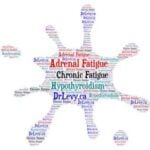Is Reversing Hearing Loss or Deafness Possible ?
Round-window delivery of neurotrophin 3 regenerates cochlear synapses after acoustic overexposure
Abstract:
In acquired sensorineural hearing loss, such as that produced by noise, drugs or aging, there can be massive loss of the synaptic connections between cochlear sensory cells and primary sensory neurons, without loss of the sensory cells themselves. Because the cell bodies and central projections of these cochlear neurons survive for months to years, there is a long therapeutic window in which to re-establish functional connections and improve hearing ability. Here we show in noise-exposed mice that local delivery of neurotrophin-3 (NT-3) to the round window niche, 24?hours after an exposure that causes an immediate loss of up to 50% loss of synapses in the cochlear basal region, can regenerate pre- and post-synaptic elements at the hair cell / cochlear nerve interface. This synaptic regeneration, as documented by confocal microscopy of immunostained cochlear sensory epithelia, was coupled with a corresponding functional recovery, as seen in the suprathreshold amplitude of auditory brainstem response Wave 1. Cochlear delivery of neurotrophins in humans is likely achievable as an office procedure via transtympanic injection, making our results highly significant in a translational context.
Reference:
Suzuki J, Corfas G, Liberman MC. Round-window delivery of neurotrophin 3 regenerates cochlear synapses after acoustic overexposure. Scientific Reports. 2016;6:24907. doi:10.1038/srep24907.
Book An
Appointment Now
Click below to get started and schedule your appointment online.
More Posts
Categories
Tags
BOOK YOUR APPOINTMENT
Click below to get started and schedule your appointment online.





